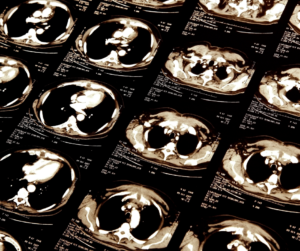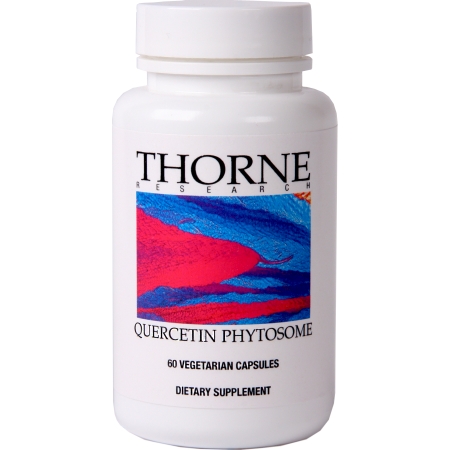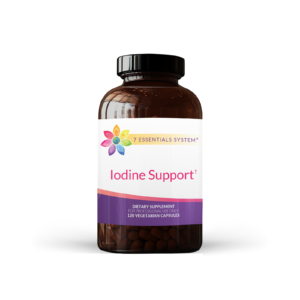
Radiation-based scans such as PET scans, bone scans, CT scans, MRIs are common procedures in conventional medicine. Odds are, you have had one of these done yourself at some time in your life. Sometimes these procedures are necessary. Unfortunately, that doesn’t negate the fact that they do come with health risks because of the radiation they emit. In this article, I will take a look at the various kinds of scans and the risks of each. I will also dive into some proven modalities that can help you recover from radiation exposure. Finally, I will share some other testing modalities. These can provide you with the same information (and sometimes more accurate information!) with less or no health risk for you.
More Than Ever People Are Getting Radiation-Based Scans
Now more than ever before Americans are getting imaging and scans done, according to the University of California, San Francisco, and other institutions. In a study conducted by UCSF, the number of people in both the US and Canada getting radiation-based imaging and scans “rose dramatically” during the ten years between 2006 and 2016. And in a report compiled by several universities in Nebraska and Utah, “[a]s many as 2% of cancers (and an associated 15,000 deaths annually) can be linked to computed tomography exposure alone.” Wow!
Let’s dive into four of the most basic kinds of scans to determine the benefits and risks of each:
CT Scan:
The CT scan is probably the most common kind of scan you can get. It stands for computerized tomography. This scan uses x-rays to create “detailed images of the inside of the body.” Sometimes a CT scan is called a CAT scan. CAT scans are mostly used to diagnose conditions. With a CT, a radiographer can see bone damage, how internal organs are functioning, blood flow, and more. This can all be very helpful for determining what might be going on with the body, but it does come with a cost. 
The bad news is that even conventional sources state that the radiation levels emitted from a CT scan can lead to DNA damage and cancer. What’s more, radiation has an accumulative effect. So you could be affected exponentially with the more scans you get over time. Studies also note that ionizing radiation like that found in CT scans can be more harmful to children because they are still growing physically.
PET Scan:
A PET scan is also known as a “positron emission tomography” scan. It is mostly done to help detect cancer, heart issues, brain disorders, and central nervous system disorders. This test relies on a “tracer” dye that is radioactive. According to the American Cancer Society, getting a PET scan done is the same as exposing oneself to about 8 years of “average background radiation exposure.”
Most conventional experts will state that the risk of radiation-linked health issues as a result of getting a PET scan is fairly low since most of the tracer substance will pass out of the body. We know, however, that even a small amount of residual can create problems. Residual is more likely to occur in people who have low liver or kidney function. Like a CT scan, the radioactive components in a PET tracer may have an accumulative effect over time.
Bone Scan:
A Bone Scan is a test that also relies on ionizing radiation. It is a “nuclear imaging test” that helps to determine if you may have a bone-related disease or condition. A person may opt to get a bone scan if they have unexplained bone or skeletal pain. Or they may get a bone scan if an injury is not healing properly. Bone scans are also performed to assess the development of certain kinds of cancer. Bone scans typically use less radiation than CT or PET scans. However, the amount can still affect DNA, especially when accumulated over time and multiple tests.
 MRI:
MRI:
Finally, MRI stands for Magnetic Resonance Imaging. It is a powerful device that utilizes radio waves and magnets. It creates detailed images of the inside of the body. MRIs are especially used where soft tissue is concerned, especially in the brain. It can also be helpful to determine if certain treatments are providing the desired effect. MRIs do not use ionizing radiation to produce images. This doesn’t mean that it comes without risks, however. In fact, a lot of the risk of an MRI lies in the “unknowns” of using it. There haven’t really been that many studies done assessing the health risks of strong magnetic forces.
For those with pacemakers, metal plates, and a laundry list of other issues, an MRI is something you are going to want to avoid. However, the RF or radiofrequency field created by an MRI can cause tissue to heat up. In addition, some studies show that there could be negative effects for the eyes (retina), the pineal gland, and cells in the paranasal sinus region. Damage to nerve function, muscle fibers, and ears (because of the acoustic noise) can happen as well.
Many doctors prefer to use a contrast dye called gadolinium when ordering an MRI. Some studies have found toxic residual effects of gadolinium, especially amongst those with poor kidney function.
8 Known Radiation Busters You Can Use NOW for Scan Radiation Protection
Let’s assume you are preparing yourself to get one of the above imaging and scans done soon. Or maybe you have already had one or several done over the years. Either way, to protect yourself from radiation exposure, detoxify afterward, and boost both your immune system and detoxification system, there are things that you can do before and after you get your test done. Here are just a few:
#1 Quercetin:

Many studies, including a 2014 investigation published in the journal Free Radical Research, have found that quercetin’s “free radical scavenging” properties as well as its character as a super antioxidant can both contribute to preventing radiation-induced organ damage. Many fruits and vegetables contain quercetin.
If you are interested in supplementing with quercetin, I recommend this product by Thorne Labs. Two capsules with breakfast, 2 with lunch, and 2 with dinner can help you before and after ionizing radiation testing.
#2 Fermented Soy:
Fermented soy is a great radiation reducer. Additionally, it provides nourishing iodine for the thyroid and reproductive organs. Try miso soup for radiation removal by mixing 1 tablespoon of organic fermented miso paste in hot (not boiling) water. There is a specific bacterium in miso that has been shown to help expel radiation substances in the body.
Haelan 951 is another option for fermented soy. This is a very concentrated soy beverage that relies on the power of a fermentation process and the many benefits as a result. Discovered in the 1980s, by Chinese doctors who were looking for a way to support patients who had undergone chemo and other traditional treatments.

How concentrated is 1 bottle of Haelan? One bottle contains 25 pounds of non-GMO and organic soy. In order to produce a much greater concentration of isoflavones and genistein, a particular strain of bean is used and soil conditions are closely monitored.
Isoflavones act as phytoestrogens or plant estrogens by having weak estrogenic effects on the body, thereby protecting it from the more aggressive, cancer-causing estrogens.
If you are on an active healing journey, use 1 bottle of Haelan per day (4 oz. in the morning on hour before breakfast and 4 oz. in the evening 2 to 3 hours after dinner. You can also add Coco Complete powder to the mixture if the taste is too harsh.
#3 Vitamin E:
Vitamin E is a super antioxidant as well. This is why it is amazing for mopping up radiation from the body. The Armed Forces Radiobiology Research Institute put together a 2013 study that found that vitamin E is a serious and significant substance for countering the effects of radiation. The product I recommend to get the absolute best vitamin E protection is called Unique vitamin E. This type of Vitamin E is a tocotrienol, has been shown to provide 40-60 times more protection than tocopherols. the other kind of Vitamin E. Be sure to take it a few days before as well as for several days after your test. Three capsules twice per day is great for saturation.
#4 Poly MVA:
Poly MVA© is a unique and patented formula created by acclaimed biochemist Dr. Merrill Garnett. It uses the antioxidant power of ALA or alpha-lipoic acid. Its super absorbable form strengthens and renews cellular health and flushes out toxins, including radiation. It is recommended that you take 2 teaspoons 4 times per day if you are on a healing journey. Check with your Poly MVA distributor as there are certain supplements that you should not take with Poly MVA.
#5 Curcumin:
Curcumin is an anti-inflammatory, anti-cancer, phytonutrient found in the Indian spice turmeric. A recent study on patients undergoing chemotherapy and radiation therapy found that those who supplemented with curcumin had fewer symptoms than those who were taking a placebo. I suggest a product called Optimal Curcumin. Take 2 capsules 3 times per day with meals.
#6 Spirulina and Chlorella:
All green veggies have some amount of chlorophyll. Chlorophyll is a powerful phytonutrient, detoxifier, and protector of cellular health. The algae, known as spirulina (as well as chlorella) both contain high amounts of it. This as well as the plethora of other phytonutrients, vitamins, and minerals.
These two substances rise to the top of the list when it comes to protection against radiation. In fact, according to author and visionary nutritionist David Herzog, “[d]uring the Chernobyl disaster, a dose of 5 grams of spirulina for 45 days was used successfully in fighting radiation poisoning.”
#7 Iodine:

It is common knowledge that iodine protects the thyroid against radiation. In reality, it does so much more. It is literally the “food” for this gland and many others throughout the body. There are many different kinds of iodine as well as specific recommendations regarding its use depending on the person. Ask about a 24-hour Iodine-Loading Urine Test to determine your optimal dosing. I would suggest that you also test for iodine blockers such as bromide, fluoride, and chloride.
My suggestion for this test is Hakala Research Iodine + Bromide test. Also, be sure to check out our iodine suggestion in the Breast Cancer Conqueror store!
Put It All Together for a Radiation-Busting Protocol That Works
Of course, that is just the beginning. There are many options when it comes to the substances you can use. They can help rebalance, detox, and protect both before and after radiation-centered tests. These others include black walnut tincture, aloe vera, homeopathic remedies, acupuncture, and more!
Whatever modalities you choose, make sure you put together a clear protocol for before and after your test. For example, one could consume high dose vitamin E (Tocotrienol), curcumin, spirulina, or chlorella, as well as drink miso soup several times per day throughout the week. Be sure to drink at least half your weight in ounces per day of fresh filtered water as well. The simple act of drinking water is perhaps the most important avenue of detoxification out there!
Are There Safer Options Than The Scans?
Like I said at the beginning of this article, sometimes these kinds of imaging and scans may be necessary. Ultrasound and Thermography may be viable options, depending on the status of your health and the progression of disease. Although these scanning tools do not emit radiation, they will not provide the detailed information that other conventional scans do. Discuss your options with your doctor and always make an informed decision. Prepare your body before and after any kind of testing.

Hello! I am post surgery for a small lumpectomy (lobular carcinoma) and trying to figure out my plan moving forward as I at this point have refused radiation but also aware I will need to have follow up scans, check ups for the rest of my life. They say w/out radiation 30% chance it will return. With radiation, only 3%. I am not sure if to believe that but have intuitively been a ‘no’ at least at this point for radiation. They say yearly mammograms to watch things.. and that the radiation quotient in these is minimal compared to many other situations we encounter in life. Thought? Or is the thermography a better option? Thank you for all you do!
Hi Shannon! Have you read these yet?? https://www.greenmedinfo.com/blog/confirmed-breast-screenings-cause-more-harm-good https://breastcancerconqueror.com/beyond-mammogram-6-safe-and-effective-breast-screening-options/ (But now we do the Galleri test instead of the Ivy Gene fyi) I hope it helps you determine what is right for you!